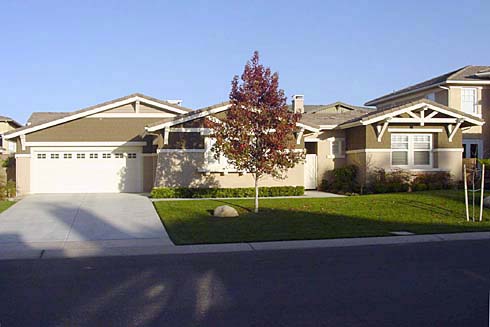BACKFILL
Understanding Backfill in Real Estate
In the realm of real estate and property development, the term 'backfill' holds significant importance. It refers to the process of refilling an excavated area with suitable materials, allowing for the development of new structures or the restoration of the land to its original state. Let's delve deeper into the concept of backfill in real estate and understand its various implications and applications.
What is Backfill?
Backfill is the process of replacing or replenishing soil or other materials that have been removed during excavation. This procedure is crucial in various real estate development projects, ranging from residential and commercial construction to infrastructure and landscaping endeavors. The primary aim of backfilling is to provide structural support, stability, and prepare the ground for further construction activities.
Importance of Backfill in Real Estate
The significance of backfill in real estate cannot be overstated, as it serves several essential purposes:
Foundation Stability:
Backfilling around the foundation of a building is vital for ensuring stability and preventing settlement issues. Proper backfill material and compaction techniques are essential in this regard.
Utilities Installation:
Backfilling is necessary after the installation of utility lines such as water pipes, sewer lines, and electrical conduits. It helps in securing and protecting these essential systems.
Landscaping and Grading:
Backfilling is commonly employed in landscaping projects to create desired elevations and contours, as well as to support the growth of vegetation.
Environmental Remediation:
In cases where contaminated soil is removed, backfilling with clean fill material can aid in environmental remediation efforts.
Types of Backfill Materials
Types of Backfill Materials
The selection of backfill materials depends on the specific requirements of the project and the characteristics of the site. Common backfill materials include:
Gravel:
Often used for its drainage properties and ability to provide structural support.
Sand:
Suitable for backfilling around underground utilities due to its ability to easily flow and compact.
Crushed Stone:
Ideal for backfilling in areas where good compaction is required.
Soil:
The native soil excavated from the site can sometimes be reused as backfill, provided it meets the necessary engineering standards.
Considerations and Best Practices
When executing backfilling operations in real estate and construction projects, certain considerations and best practices must be taken into account:
Compaction:
Proper compaction of backfill materials is essential to prevent settling and structural issues over time.
Drainage:
Adequate provisions for drainage must be made to prevent water accumulation and potential damage to foundations.
Material Quality:
The quality and suitability of backfill materials should align with the specific requirements of the project.
Regulatory Compliance:
It is crucial to adhere to local regulations and environmental guidelines when sourcing and placing backfill materials.
Conclusion
In essence, backfill plays a fundamental role in the successful implementation of real estate and construction endeavors. Whether it's providing foundational support, facilitating utility installations, or enhancing the aesthetics of a landscape, the proper execution of backfilling operations is pivotal. By understanding the significance of backfill, selecting appropriate materials, and adhering to best practices, real estate professionals can ensure the integrity and longevity of their developments.
MORE REAL ESTATE TERMS
A, B, C, D, E, F, G, H, I, J, K, L, M, N, O, P, Q, R, S, T, U, V, W, X, Y, Z
Featured New Home

Featured Mortgage Brokers
- CrossCountry Mortgage, Inc., mortgage broker in Elgin, IL
374 N Mclean Blvd
Elgin, IL 60123 - WESTSTAR MORTGAGE CORP, TUMWATER, WA
2620 R W JOHNSON RD SW # 104
TUMWATER, WA 98512 - PRIMELENDING A PLAINSCAPITAL COMPANY, MELVILLE, NY
200 BROADHOLLOW RD STE 207
MELVILLE, NY 11747 - EQUITY LOANS LLC, NEW CITY, NY
216 CONGERS RD STE 3A
NEW CITY, NY 10956 - SYNOVUS MORTGAGE CORP, ROSWELL, GA
10446 ALPHARETTA ST
ROSWELL, GA 30075